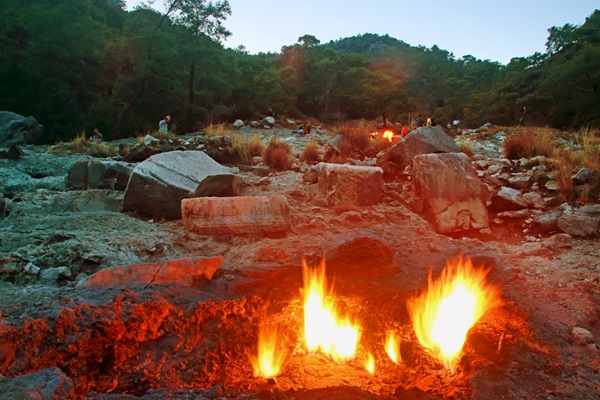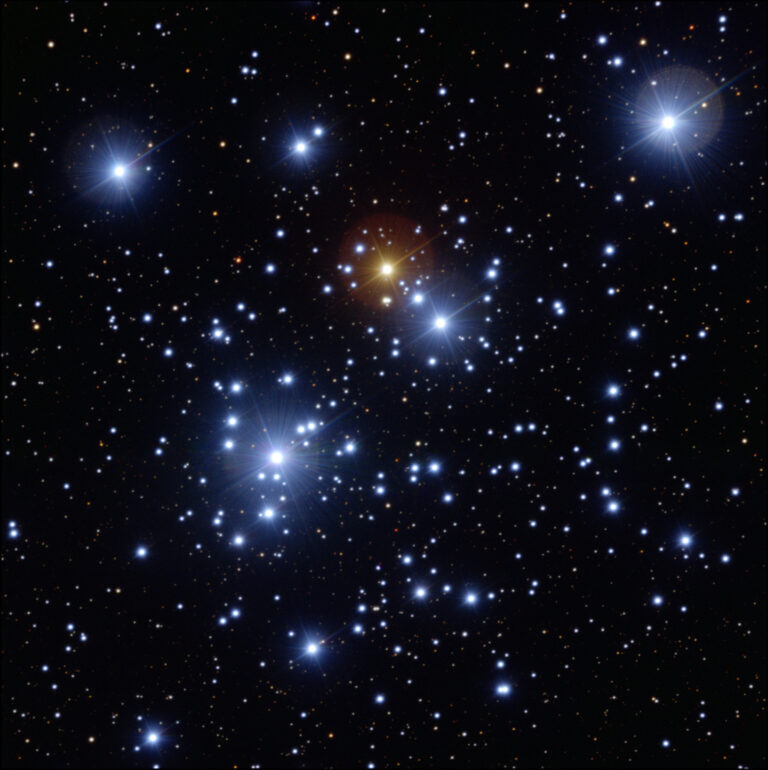Key Takeaways:
Terran inspiration?
Last October, Deborah Carter and I climbed Mount Chimaera in southern Turkey to see what Pliny the Elder referred to as “a flame that does not die by day or by night.” As we watched this eternal fire (actually numerous pockets of methane that have been burning for some 2,500 years) with the stars of Cetus rising and Perseus and Pegasus flying, I saw what Stephen R. Wilk proposes in his book Medusa: Solving the Mystery of the Gorgon — that Cetus is the mythological chimera.
The poet Homer describes the chimera as being a “monster of divine origin,” with a serpent’s tail, a she-goat’s body, and the head of a lion with fiery breath. Early sources also tell us that Mount Chimaera was likely the terrestrial inspiration for the Frankenstein-like appearance of this beast.
When Capt. Francis Beaufort, an associate of John Herschel and creator of the Beaufort wind scale, observed the eternal flames, he wrote that they came from an “aperture … shaped like the mouth of an oven.” This terrestrial aperture resembles the irregular oval of stars that forms the head of the celestial chimera.
Dual duties
If Cetus is the chimera, Wilk says, then Perseus doubles as Bellerophon, the hero who tamed Pegasus using Athena’s golden bridle. He writes, “Flying on the winged steed … Bellerophon came upon the monster from above and peppered it with arrows. Finally, he shoved a lump of lead down its throat.”
Another twist
In his Fabulae, a compilation of short myths and celestial genealogies written in the first century b.c., author Gaius Julius Hyginus tells us that Ceto (Cetus) is the mother of Medusa, whom Perseus beheaded. In many modern versions of the tale, Perseus then saves Andromeda from Cetus by holding up the head of Medusa and turning the leviathan to stone. So, in this version, Perseus kills both mother and daughter.
The first-century Roman poet Marcus Manilius, however, has Perseus engaged in a more savage battle with Cetus, as told in his Astronomica: “Hereupon … Perseus flies upwards and from the skies hurls himself at the foe … At last, its frame riddled with stabs, the beast sinks, returns once more to the surface, and covers the mighty ocean with its massive corpse.”
Is Mira the fatal stab wound in the creature’s neck? Could the beast’s sinking and rising from the sea mirror the variable star’s actions? As you watch Mira rise and fade this season (as the Whale sinks beneath the surface of the western horizon), give thought to these questions and send your conclusions to sjomeara31@gmail.com.












